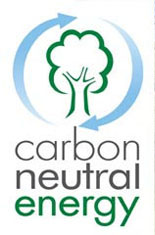 |
|
Wood is better in environmental terms as the amount of carbon dioxide released into the atmosphere is the same as that absorbed by the tree during growth. It is also a renewable resource, particularly when derived from plantations and cultivated woodland.
For optimum results, we recommend logs should be seasoned for 2 years or more to achieve a moisture content below 20%.
This will not only give up to twice the output of freshly felled timber but help avoid a build up of tar in your flue.
Furthermore, if you can obtain hardwood logs this is better still, as they will have around twice the calorific value of softwoods.
Visit our online shop for details of the woodburning stoves we supply.
|
 Wood Burning Stoves
Wood Burning Stoves
You can use traditional wood burning stoves to heat your rooms, your water, and even to cook on. A basic stove will be cast iron or steel usually with a door at the front for loading, lighting and ash removal.
Open fires are pretty, but most of the heat disappears up the chimney. Also, updraughts from below pass through the logs and draw off volatile gases (which provide most of the heat) and suck them up the chimney unburnt, which wastes heat and causes tar build-up in the chimney. The casing of a stove heats up and radiates heat out into the room. You can have a simple stove for heating, or one with a back boiler to provide hot water / central heating.
 What are the benefits?
What are the benefits?
CO2 is the most important greenhouse gas; wood is a carbon-neutral fuel source in that burning releases CO2 (the same amount as if the trees died and rotted) but new trees absorb it. Wood is a renewable resource that provides a habitat for wildlife. It also has a good energy balance, i.e. can be locally produced, requiring very little processing or transport energy.
Emissions are better than coal, oil or gas as regards NOx and SOx (acid rain) and carbon monoxide but worse for particulates. For space heating, emissions and energy losses from power stations make electricity the worst option environmentally; and wind and photovoltaic's are as yet too expensive for heating.
Modern 'clean burn' stoves can be used in smokeless zones; they use secondary combustion, baffles or catalyst to maximize combustion of gases and particulates, reducing emissions and increasing efficiency.



